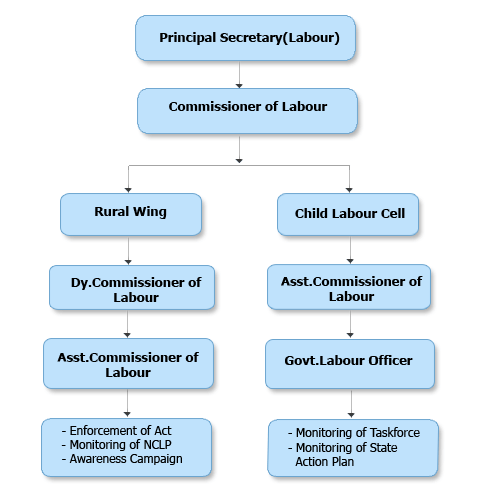The issue of child labour continues to pose a challenge before the nation. Government has been taking various pro-active measures to tackle this problem. However, considering the magnitude and extent of the problem and that it is essentially a socio-economic problem inextricably linked to poverty and illiteracy, it requires concerted efforts from all sections of the society to make a dent in the problem.
Way back in 1979, Government formed the Gurupadswamy Committee to study the issue of child labour and to suggest measures to tackle it.
The Committee examined the problem in detail and made some far-reaching recommendations. It observed that as long as poverty continued, it would be difficult to totally eliminate child labour and hence, any attempt to abolish it through legal recourse would not be a practical proposition. The Committee felt that in the circumstances, the only alternative left was to ban child labour in hazardous areas and to regulate and ameliorate the conditions of work in other areas. It recommended that a multiple policy approach was required in dealing with the problems of working children.
Based on the recommendations of Gurupadaswamy Committee, the Child Labour (Prohibition & Regulation) Act was enacted in 1986. The Act prohibits employment of children in certain specified hazardous occupations and processes and regulates the working conditions in others. The list of hazardous occupations and processes is progressively being expanded on the recommendation of Child Labour Technical Advisory Committee constituted under the Act.
In consonance with the above approach, a National Policy on Child Labour was formulated in 1987. The Policy seeks to adopt a gradual & sequential approach with a focus on rehabilitation of children working in hazardous occupations & processes in the first instance. The Action Plan outlined in the Policy for tackling this problem is as follows:
- Legislative Action Plan for strict enforcement of Child Labour Act and other labour laws to ensure that children are not employed in hazardous employments, and that the working conditions of children working in non-hazardous areas are regulated in accordance with the provisions of the Child Labour Act. It also entails further identification of additional occupations and processes, which are detrimental to the health and safety of the children.
- Focusing of General Developmental Programmes for Benefiting Child Labour - As poverty is the root cause of child labour, the action plan emphasizes the need to cover these children and their families also under various poverty alleviation and employment generation schemes of the Government.
- Project Based Plan of Action envisages starting of projects in areas of high concentration of child labour. Pursuant to this, in 1988, the National Child Labour Project (NCLP) Scheme was launched in 9 districts of high child labour endemicity in the country. The Scheme envisages running of special schools for child labour withdrawn from work. In the special schools, these children are provided formal/non-formal education along with vocational training, a stipend of Rs.100 per month, supplementary nutrition and regular health check ups so as to prepare them to join regular mainstream schools. Under the Scheme, funds are given to the District Collectors for running special schools for child labour. Most of these schools are run by the NGOs in the district.
Government has accordingly been taking proactive steps to tackle this problem through strict enforcement of legislative provisions along with simultaneous rehabilitative measures.




